Don't worry, this isn't SAT prep! But since we commonly receive inquires from customers regarding product vocabulary and terminology we thought it might be helpful to pull together a list of terms and definitions.
Bagasse: The fibrous matter that remains after sugarcane or sorghum stalks are crushed to extract their juice. It's used as a biofuel and in the manufacture of pulp and building materials.
Blended Resin: Refers to the combination of two or more types of resin.
Butene: One of three types of LLDPE resin. Butene has weaker film-strength properties than hexene or octene.
C-Fold: Term commonly used for hand paper towels folded in a "C" shape and stacked. 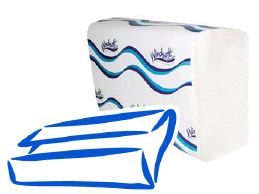
Can Liner: Term used for garbage, trash or waste bags. Used in industrial, institutional and medical applications.
Cartridges: Used primarily in inkjet printers and may include the printer head on the cartridge. Typically monochrome and color cartridges are installed separately in the printing machine. Special cartridges may be needed if printing high-quality images or photographs.
Cored Rolls: Can liners, and paper products, are rolled together on cardboard cylinders (think of a roll of paper towel). Typically can liners come inside a box that dispenses with ease.
Coreless Rolls: Can liners are rolled in groups of 25-50 per roll. Rolls tend to be perforated or interleaved.
Color: Sold as Tri-Color or separately by color. Cyan (Blue), Magenta (Red), Yellow and BlacK are the basic colors used to create color prints. Found in standard sizes and high capacity cartridges.
Drums: Term for the central part of a printing device. Receives the image from the printing device and transfers it to the paper to produce the final print. Widely used in laser printers, copiers and fax machines. Often found in commercial or business settings where print volume is high. 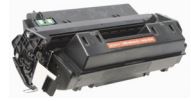
Dry Load Capacity: Measurement of how much dry weight a can liner will hold.
Enviro-Conscious: Term to highlight products identified by their manufacturer as having one or more of the following attributes: reduced VOCs, compostable, biodegradable, recyclable, contains recycled content, or other environmental attributes that make the product less harmful to the environment or humans, when compared to its traditional counterparts.
Film Strength: Refers to the physical strength of the can liner. Some resins have a higher film strength than others. For example, Heritage bags feature a very high quality resin.
Flat Seal: Straight seal along bottom of a can liner (looks like a pillow case). Though Flat Seals are strong, they may have a tendency to leak wet trash from the corners.
Gauge: Term used to describe thickness. LDPE and LLDPE can liners are measured by mil thickness and HMW-HDPE can liners are measured by micron thickness.
Gusset Seal: A flat-style bag manufactured with both sides tucked in to form gussets. Has a tendency to leak wet trash from the center at gusset points where four layers of film meet two.
Hardwound: Term commonly used when referring to away-from-home/dispensers use roll towels. 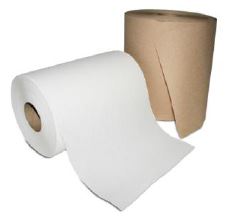
HAO (Higher Alpha Olefin resin): A high-grade hexene- or octene-based resin used in most LLD liners. The properties of this resin allow for a higher-quality can liner.
Hexene: One of three types of LLDPE resin. Properties include high film strength and increased tear resistance.
HMW-HDPE (High Molecular Weight-High Density Polyethylene) Bags made from HMW-HDPE resin provide excellent film strength and puncture resistance, but less tear resistance than LLDPE.
LDPE (Low Density Polyethylene): This resin was used with older can liner technology. Resin has good clarity but weak film strength. Today it is used primarily for Food and Utility Bags that don't require heavy loads.
LLDPE (Linear Low Density Polyethylene): This is the primary type of resin used in modern can liner manufacturing technology. Bags made from LLDPE film provide excellent combination of film strength, puncture resistance and tear resistance.
Micron: Term used in the measurement of HMW-HD can liners. 25.4 microns equals .001" microns (M) = 1mm. HMW-HDPE can liners are 6 to 24 microns.
MICR Toners (Magnetic Ink Character Recognition): Used primarily by the banking industry in check writing machines. Not built for constant handling, prone to breaking. Black and white documents can also be printed using this cartridge. Dual function printers using both MICR and laser printer toners are also available. 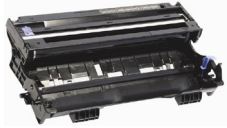
Mil: (One thousandths of an inch) Term used in the measurement of LDPE and LLDPE can liners. One mil is .001". Can liners range between .35 to 4.0 mil.
Monochrome (Black): Sold in separate cartridge or part of a color cartridge. Basic color found in all printing machines. Found in standard sizes and high capacity cartridges.
Multifold: Term for interfolded in a "zigzag" shape; most common folded towel in commercial settings. 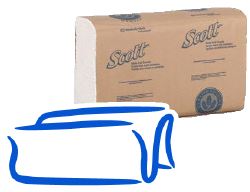
Octene: One of three types of LLDPE resin. Used in manufacturing can liners, due to its excellent physical properties
OEM: Abbreviation for Original Equipment Manufacturer
Prime Resin: Refers to the usage of high-quality, "fresh from the reactor" resin.
Regrind Resin (Repro): Refers to resin that has been used at least once before. Can be post-industrial (scrap) or post-consumer (recycling). Strength properties of resin is decreased each time it is reused.
Resin: Short term for Polyethylene resin. The main types of PE resin are: Low Density Polyethylene, Linear Low Density Polythylene, High Molecular Weight/High Density Polyethylene, and Higher Alpha Olefin resin.
Seal: Term used to describe bottom of a can liner. The three types of seals are Flat, Gusset, and Star.
Singlefold: Term commonly used for hand paper towels folded once and stacked.
Star Seal: Designed without gussets, the Star Seal eliminates gaps along the seal where leaks can occur. The bottom of the bag is folded over several times and sealed. Trash rests on the material instead of the seals. This leak-resistant seal holds wet trash better than the other two seal types.
Tissue: General term indicating a class of papers of characteristic gauzy texture. Tissue papers are made on any type of paper machine, from any type of pulp, including reclaimed paper stock.
Toners: Toners and drum cartridges work together in the printing machine to create a final print. Widely used in laser printers, copiers and fax machines. Often found in commercial or business settings where print volume is high. Monochrome and color toners available. Toner and drum may be combined as a single unit. 
Wet Load Capacity: Measurement of how much wet weight a can liner will hold.
Wet Strength: Term for how well a paper product will hold up when wet. Typically used when referring to toilet paper, paper towels, etc. A toilet paper that retains more than 15% of its dry-strength when completely saturated with water may be correctly referred to as "wet-strength paper".
Manufacturer Prefixes - Quick Guide
(Manufacturer Name, New Prefix, Old Prefix)
3M: MMM, MCO
Amrep/Misty: AEP, AMR
Ansell: AHP, ANS
Arm & Hammer: CHU, CDC
Bolt: BOL, BLT
Clorox: COX, CLO
Colgate: CPM, CPC
Crown Mats & Matting: CWN, CRO
Dart: DRC, DCC
Dial: DPR, DIA
Diversey: DRA, DRK
Dixie: DXE, DIX
Duracell: DUR, DRC
Eco Products: ECO, ECP
Ecolab (Endust): END, JAN
Energizer: EVE, ENE
Eureka/Sanitaire: EUK, EUR
Franklin: FKL, FRK
Fresh Products: FRS, FPI
GEN Paper: GER, GEN
Genpak: GPK, GNP
Georgia Pacific: GEP, GPC
Hoffmaster: HOF, HFM
Huhtamaki Foodservice (Chinet): HTM, HUH
Kimberly Clark: KIM, KCC
Krystal: KRA, KRY
Marcal: MAC, MRC
Motsenbocker (Lift Off): MOT, MTS
Murphy's Oil: CPM, MUR
Premiere Pads: PMP, PAD
Proctor & Gamble: PAG, PGC
Reckitt Benskiser: RAC, REC
San Jamar: SJM, SAN
Scrubs/ITW Dymon: ITW, DYM
Simple Green: SMP, SPG
Solo: SLO, SCC
TimeMist: WTB, TMS
US Pumice (Pumie): UMP, PUM
WD-40: WDF, WDS
Windsoft: WNS, WIN